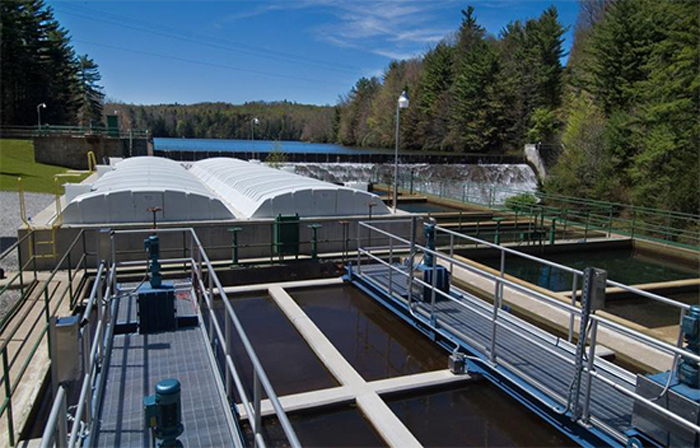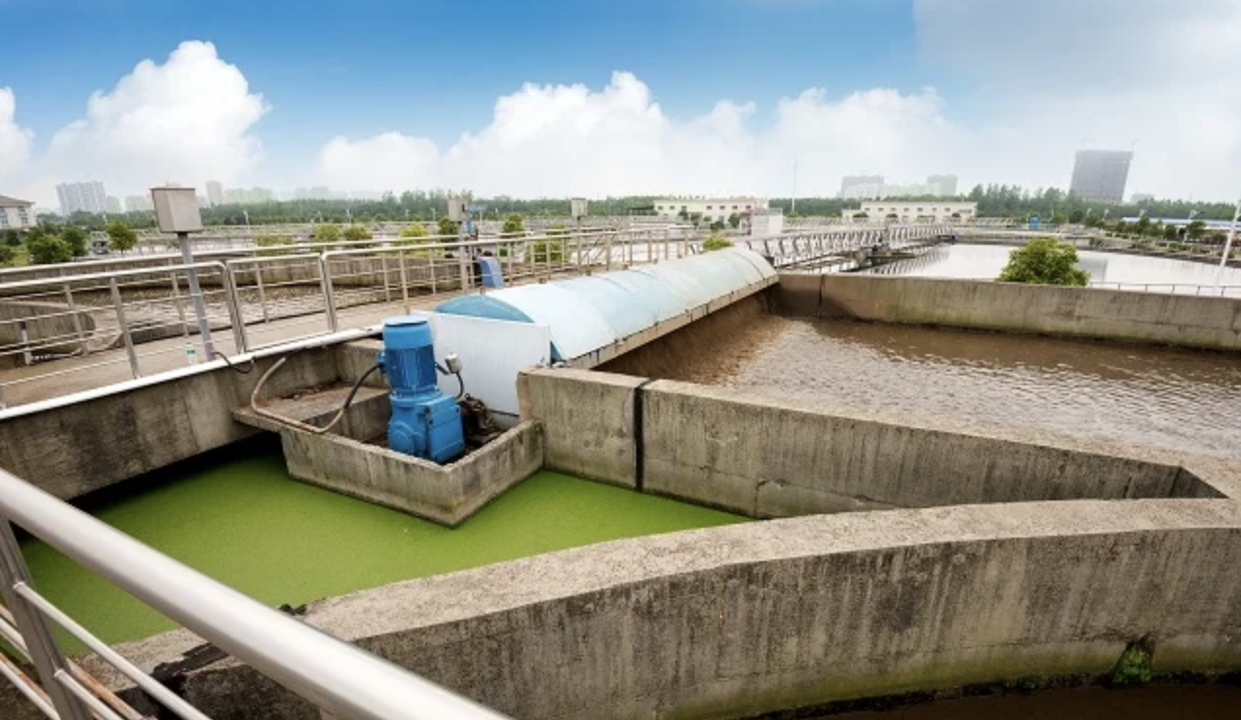
Commercial plant water treatment aims to ensure that potable water is free of any biological, chemical, or physical contaminants that could endanger its purity for human consumption or household use. With this procedure, you can make water that is clean, tasty, odorless, colorless, and safe to drink. The water must also not be corrosive so as not to harm the pipes.
Here are the steps for commercial plant water treatment
Water sources for collecting
The first step in treating water is gathering it from different places, such as underground aquifers, reservoirs, or rivers. The accessibility and placement of water resources determine the potential sources. It may be necessary to use specialized treatment technologies to guarantee the safety of the water because its quality can vary.
Screening and Intake
A preliminary screening procedure will help remove big debris from the collected water, such as floating materials, twigs, and leaves. Fine and coarse screens help to filter out these contaminants from the water. Water treatment plants use coarse screens. These feature rust-resistant steel bars spaced apart. This is to help remove more significant contaminants and fine screens, which include micro strainers, to capture particles as tiny as plankton and algae.
Pre-chlorination and aeration
Once screening is complete, it goes to the treatment facility for aeration. Gases like hydrogen sulfide and carbon dioxide are removed from water by adding air, a process known as aeration. Thus, this procedure aids in lessening the water’s corrosiveness and removing any off-putting odor or taste brought about by gaseous organic compounds (GOCs). Overgrowth of algae, which can block downstream filters, necessitates pre-chlorination in certain instances. As part of commercial plant water treatment, chlorination eliminates algae and oxidizes chemicals that cause bad smells and tastes.
Flocculation and coagulation
After aeration and pre-chlorination, the water moves to the flocculation and coagulation steps. They add a coagulant, like ferric chloride or aluminum sulfate, to the water. This counteracts the negative charge of the tiny particles floating in the water. The coagulant combines these particles into bigger masses known as flocs. As a result, flocculation, which involves slightly stirring the mixture in flocculation basins, causes the flocs to grow. This makes their subsequent removal easier.
Sedimentation
Sedimentation is the subsequent primary unit process that the flocculated water undergoes. Sedimentation is a technique that reduces the particulate load on filters by removing suspended solids that are denser than water. To achieve sedimentation, the treated water’s velocity needs to be reduced below a point where it can carry settleable suspended material. This will enable easy removal of the suspended particles by gravitational forces.
When sedimentation basins are nearly empty, any settled sediments will sink to the bottom. Sedimentation is a powerful process that may filter out almost all the suspended particles in water. The surface water that is already quite clear is gathered in the washing tubes, which are then sent to the filter gallery to filter out the remaining 10% solids.
Filtration
As a last step in the commercial plant water treatment process, the chlorine-settling water goes to the filtration facility and is filtered there. If any particulate contaminants remain after sedimentation, they can be eliminated by filtering the water through a sand or coal bed medium. The water treatment plant employs gravity filter beds that use multi-media at a quick rate. In order to filter water, the filters have:
- Anthracite at the top
- Filter sand in the center
- Garnet sand at the bottom
- An underdrain system
Water enters the filter medium at the top and, due to gravity, flows down through the filter beds. The various materials combine as a massive strainer, collecting any leftover particles. Operators clean the filters by backwashing them when they begin to become clogged with particulates. The trapped particles are released as potable water flows backward through the filters into the drain troughs. After reaching the Backwash Recovery Pond, the backwash water undergoes a settling process before being recycled into the raw water settling pond.
Disinfection
The next step, after filtering, is disinfection, which gets rid of any lingering harmful microbes. Common disinfectants include chlorine dioxide, chlorine, chloramines, ammonia, and chlorine mixtures. By eliminating potentially dangerous microbes, these compounds guarantee that the water is fit for human consumption. Fluoride is frequently included to further aid oral health by preventing tooth decay.
After disinfection, the commercial plant water treatment process often adds fluoride and changes the pH of the water. Decreasing rust (pipe breakdown), improving the taste, and ensuring chemical disinfectants continue to eliminate germs while water passes through pipes are all achieved by adjusting the pH. Prevent tooth decay and strengthen the enamel by consuming water with an appropriate amount of fluoride.
Advanced treatment methods
Some commercial plant water treatment facilities use cutting-edge methods to improve water quality further. The two most famous processes are ultrafiltration and reverse osmosis (RO). In reverse osmosis (RO), water is filtered by forcing it through a membrane with microscopic holes. Meanwhile, desalinating saltwater for human use or purifying recycled water are two applications where this technology shines. Conversely, ultrafiltration separates water from charged particles, salt, and bigger molecules using a filter membrane with minute pores.
Ozone treatment and UV sterilization
Commercial plant water treatment occasionally employs ozone treatment and ultraviolet sterilization as alternate disinfection procedures. Ozone and ultraviolet radiation can effectively kill microbes and bacteria in water. Thus, ultraviolet light kills bacteria and other microbes by destroying their DNA and making them sterile. Ozone, a strong oxidizing agent, also chemically destroys microbes. These cutting-edge treatment methods guarantee the most stringent water safety standards, which offer an extra buffer.
Distribution of treated water
The water is prepared for distribution to end-users like businesses and households once it has completed the required treatment processes. A system of pipes helps to transfer the treated water to its ultimate location.
Commercial plant water treatment methods
- UV sterilization filters
Ultraviolet light sterilization is one of the best ways to disinfect water and eliminate bacteria and other pathogens. UV radiation will destroy any microorganisms, including protozoa, bacteria, and viruses, to make drinking water safe.
- Activated carbon
The activated carbon water filter is one method used in commercial plant water treatment. It traps pollutants and harmful substances in the water by attaching them to carbon. Carbon filters aid in water purification by absorbing pollutants. Carbon filters can help remove chlorine and other dangerous compounds from water.
- Reverse osmosis
Many commercial water filtration plants employ reverse osmosis water purification systems because they are very versatile. A RO-based system has been an excellent method for purifying water by eliminating bacteria, fluoride, and dissolved salts.
The advantages of commercial plant water treatment
Commercial plant water treatment has numerous potential applications in the food and beverage, pharmaceutical, healthcare, and manufacturing sectors, among many others.
 Pharmaceuticals
Pharmaceuticals
Water quality is more important for the pharmaceutical business than for many others.
- Healthcare
Poorly treated and managed water can significantly affect visitors’, staff, and patients’ well-being, security, and convenience.
- Food and beverage
The food and beverage business relies on water for everyday tasks, including washing and incorporating ingredients into recipes.
- Manufacturing
Minimizing the manufacturer’s environmental impact, enhancing operating efficiencies, and improving equipment lifetime are possible water treatments. A wide variety of manufactured items rely on it, including those in the building and construction, aerospace and defense, automotive, electronic, textile, rubber, and plastics industries.
Conclusion
Keeping the water supply safe for residential and commercial usage depends on the procedures performed at the commercial plant water treatment facility. Regular quality checks of the procedures are essential for meeting regulations. It will also provide the public with safe, healthy water. For this reason, it is necessary to employ experts who are familiar with water purification processes and who can maintain treatment plants.
